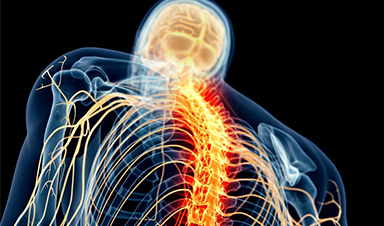UCLA researchers have identified placental growth factor (PlGF) as a potential blood biomarker for early detection of cognitive impairment and dementia.
High PlGF levels correlate with increased vascular permeability, suggesting its role in the development of cerebral small vessel disease. This finding could enable earlier identification and intervention for at-risk individuals compared to current MRI-based diagnostics.
Vascular Changes and Dementia
Researchers and clinicians typically use MRI scans to track brain blood vessel changes linked to cognitive impairment and dementia. These scans detect “downstream” biological markers — signs that appear later in the disease process. However, a multicenter study led by UCLA researchers suggests that a simple blood test could spot earlier changes, potentially identifying at-risk patients sooner and at a lower cost.
“We studied a protein in the blood that is critical in the formation of blood vessels but that also appears to play a role in vascular permeability associated with cognitive decline,” explained Jason Hinman, MD, PhD, a vascular neurologist at UCLA Health, Interim Co-Director of the Mary S. Easton Center for Alzheimer’s Research and Care at David Geffen School of Medicine at UCLA and senior author of an article in Alzheimer’s & Dementia: The Journal of the Alzheimer’s Association.
“Evaluating data from a large group of patients with a range of vascular risk profiles and cognition ranging from unimpaired to mild dementia, we found that plasma levels of this protein, placental growth factor (PlGF), could potentially be used as a biomarker to screen for and monitor cognitive impairment and dementia.”
Cerebral Small Vessel Disease and Biomarkers
Dysfunctional cells lining blood vessels in the brain are increasingly recognized as a key driver of processes leading to cerebral small vessel disease (CSVD), a major contributor to cognitive decline and dementia. The leaky vessels are believed to allow fluid and inflammatory molecules to seep into brain tissue. CSVD is typically diagnosed through costly brain MRI, where areas of vascular-mediated brain injury appear as bright spots on clinical MRI sequences – called white matter hyperintensities, or WMH. WMH and other structural changes are late markers of vascular brain injury.
Potential of PlGF as a Biomarker
The researchers studied possible associations involving several factors: plasma levels of PlGF, a highly sensitive research MRI measure of fluid accumulation in the brain called white matter free water (FW), white matter hyperintensities, and patients’ scores on cognitive assessments. Results were consistent with models suggesting that elevated PlGF increases vascular permeability, leading to accumulation of fluid in the brain’s white matter, development of white matter hyperintensities, and subsequent cognitive impairment.
“As a biomarker for cerebral small vessel disease and the vascular contributions to cognitive impairment and dementia (VCID), PlGF could be used as a cost-effective screening tool for identifying patients at risk for vascular brain injury before the insidious onset of cognitive decline,” said first author Kyle Kern, MD, a vascular neurologist at UCLA Health and researcher at David Geffen School of Medicine at UCLA. “As a simple blood test, such a tool would be valuable not only for patients and clinicians, but also for researchers identifying patients for clinical trials,” he said.
Study Design and Future Directions
The study was conducted by researchers involved in MarkVCID, a multisite consortium established to validate candidate biomarkers for CSVD through recruitment of participants from diverse racial and ethnic backgrounds, with a range of vascular risk factors, and across the spectrum of cognitive impairment. Participants were 55 or older and had undergone brain MRI and blood tests for PlGF levels.
The authors said that while the study’s multicenter design and large, diverse sample support the use of PlGF as a biomarker, additional longitudinal studies are needed to reach conclusions about causation and timing in the relationships among PlGF, FW, WMH, and cognition. Ideally, PlGF could be used to screen younger populations for whom currently available treatments and lifestyle modifications may prevent or reverse the deleterious effects of vascular injury before the onset of cognitive dysfunction. The research group is recruiting patients for future studies.
Reference: “White matter free water mediates the associations between placental growth factor, white matter hyperintensities, and cognitive status” 18 December 2024, Alzheimer’s & Dementia.
DOI: 10.1002/alz.14408
Funding: National Institutes of Health, Grant/Award Numbers: U24NS100591, UH2NS100599, UH2/UH3NS100605, UH2NS100588, UH2NS100608, UH2NS100606, UH2NS100598, UH2NS100614, UF1NS125513, the BrightFocus Foundation.
News
Specially engineered antibody delivers RNA therapy to treatment-resistant tumors
Elias Quijano, PhD; Diana Martinez-Saucedo, PhD; Zaira Ianniello, PhD; and Natasha Pinto-Medici, PhD, there are 25 other contributors, most from Yale's Department of Therapeutic Radiology and from the departments of genetics, molecular biophysics and [...]
Vaccinated women face fewer cervical cancer risks
New data from Denmark shows the HPV vaccine’s powerful long-term impact, while also revealing why cervical cancer screening is still essential. A Danish study published in the journal Eurosurveillance reports that women who received the human [...]
3D-printed implant offers a potential new route to repair spinal cord injuries
A research team at RCSI University of Medicine and Health Sciences has developed a 3-D printed implant to deliver electrical stimulation to injured areas of the spinal cord, offering a potential new route to [...]
Nanocrystals Carrying Radioisotopes Offer New Hope for Cancer Treatment
The Science Scientists have developed tiny nanocrystal particles made up of isotopes of the elements lanthanum, vanadium, and oxygen for use in treating cancer. These crystals are smaller than many microbes and can carry isotopes of [...]
New Once-a-Week Shot Promises Life-Changing Relief for Parkinson’s Patients
A once-a-week shot from Australian scientists could spare people with Parkinson’s the grind of taking pills several times a day. The tiny, biodegradable gel sits under the skin and releases steady doses of two [...]
Weekly injectable drug offers hope for Parkinson’s patients
A new weekly injectable drug could transform the lives of more than eight million people living with Parkinson's disease, potentially replacing the need for multiple daily tablets. Scientists from the University of South Australia [...]
Most Plastic in the Ocean Is Invisible—And Deadly
Nanoplastics—particles smaller than a human hair—can pass through cell walls and enter the food web. New research suggest 27 million metric tons of nanoplastics are spread across just the top layer of the North [...]
Repurposed drugs could calm the immune system’s response to nanomedicine
An international study led by researchers at the University of Colorado Anschutz Medical Campus has identified a promising strategy to enhance the safety of nanomedicines, advanced therapies often used in cancer and vaccine treatments, [...]
Nano-Enhanced Hydrogel Strategies for Cartilage Repair
A recent article in Engineering describes the development of a protein-based nanocomposite hydrogel designed to deliver two therapeutic agents—dexamethasone (Dex) and kartogenin (KGN)—to support cartilage repair. The hydrogel is engineered to modulate immune responses and promote [...]
New Cancer Drug Blocks Tumors Without Debilitating Side Effects
A new drug targets RAS-PI3Kα pathways without harmful side effects. It was developed using high-performance computing and AI. A new cancer drug candidate, developed through a collaboration between Lawrence Livermore National Laboratory (LLNL), BridgeBio Oncology [...]
Scientists Are Pretty Close to Replicating the First Thing That Ever Lived
For 400 million years, a leading hypothesis claims, Earth was an “RNA World,” meaning that life must’ve first replicated from RNA before the arrival of proteins and DNA. Unfortunately, scientists have failed to find [...]
Why ‘Peniaphobia’ Is Exploding Among Young People (And Why We Should Be Concerned)
An insidious illness is taking hold among a growing proportion of young people. Little known to the general public, peniaphobia—the fear of becoming poor—is gaining ground among teens and young adults. Discover the causes [...]
Team finds flawed data in recent study relevant to coronavirus antiviral development
The COVID pandemic illustrated how urgently we need antiviral medications capable of treating coronavirus infections. To aid this effort, researchers quickly homed in on part of SARS-CoV-2's molecular structure known as the NiRAN domain—an [...]
Drug-Coated Neural Implants Reduce Immune Rejection
Summary: A new study shows that coating neural prosthetic implants with the anti-inflammatory drug dexamethasone helps reduce the body’s immune response and scar tissue formation. This strategy enhances the long-term performance and stability of electrodes [...]
Scientists discover cancer-fighting bacteria that ‘soak up’ forever chemicals in the body
A family of healthy bacteria may help 'soak up' toxic forever chemicals in the body, warding off their cancerous effects. Forever chemicals, also known as PFAS (per- and polyfluoroalkyl substances), are toxic chemicals that [...]
Johns Hopkins Researchers Uncover a New Way To Kill Cancer Cells
A new study reveals that blocking ribosomal RNA production rewires cancer cell behavior and could help treat genetically unstable tumors. Researchers at the Johns Hopkins Kimmel Cancer Center and the Department of Radiation Oncology and Molecular [...]





















